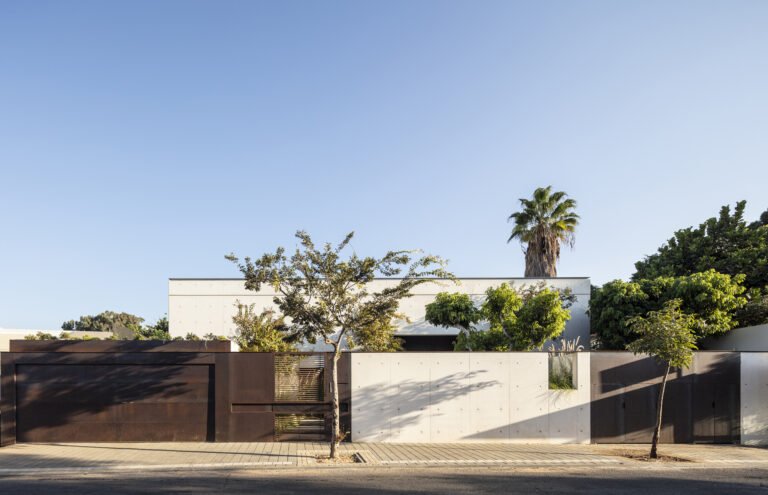Zaha Hadid Architects Shapes Infinitus Plaza Echoing the Symbol for Infinity
Infinitus Plaza – Anchoring Guangzhou’s new Baiyun Central Business District as a national centre for China’s health and wellness industries, Infinitus China’s new headquarters combines innovative design and construction technologies with proven sustainability strategies to create new work environments that unite all departments and enhance communication throughout the group. Incorporating work environments designed to nurture collaboration, the new headquarters also includes the group’s herbal medicine research facilities and safety assessment labs as well as a learning centre for conferences and exhibitions.
Architizer chatted with Satoshi Ohashi, Director (China) at Zaha Hadid Architects, to learn more about this project.
Architizer: What inspired the initial concept for your design?
Satoshi Ohashi: Located adjacent to Feixiang Park station on Line 2 of the Guangzhou Metro, Infinitus Plaza straddles the metro’s sub-surface tunnel, dividing the headquarters into two buildings that interconnect at multiple levels. Establishing collaborative work spaces that are healthier and more adaptive to new ways of working, Infinitus Plaza is designed over eight storeys as a series of infinite rings that enhance interaction and communication between all departments.
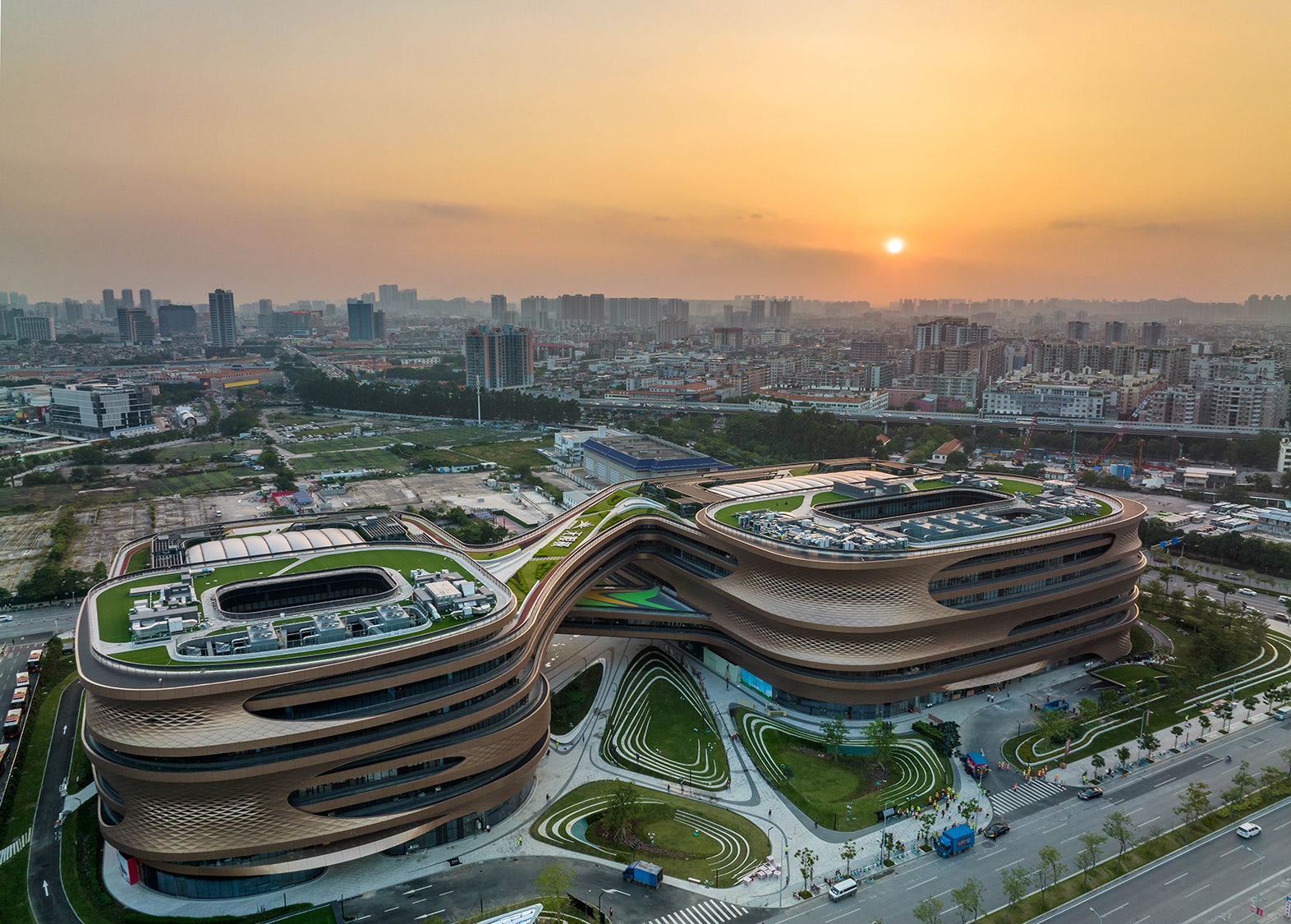
© Zaha Hadid Architects

© Zaha Hadid Architects
What do you believe is the most unique or ‘standout’ component of the project?
Arranged around central atria and courtyards, echoing the symbol for infinity “∞”, the design creates a variety of shared indoor and outdoor spaces that build the strong sense of community (Si Li Ji Ren) which defines Infinitus’ corporate culture. The interconnecting bridges house a variety of flexible communal spaces for employees that promote individual and overall wellness including gym and exercise rooms, recreation and relaxation zones as well as restaurant and cafe.
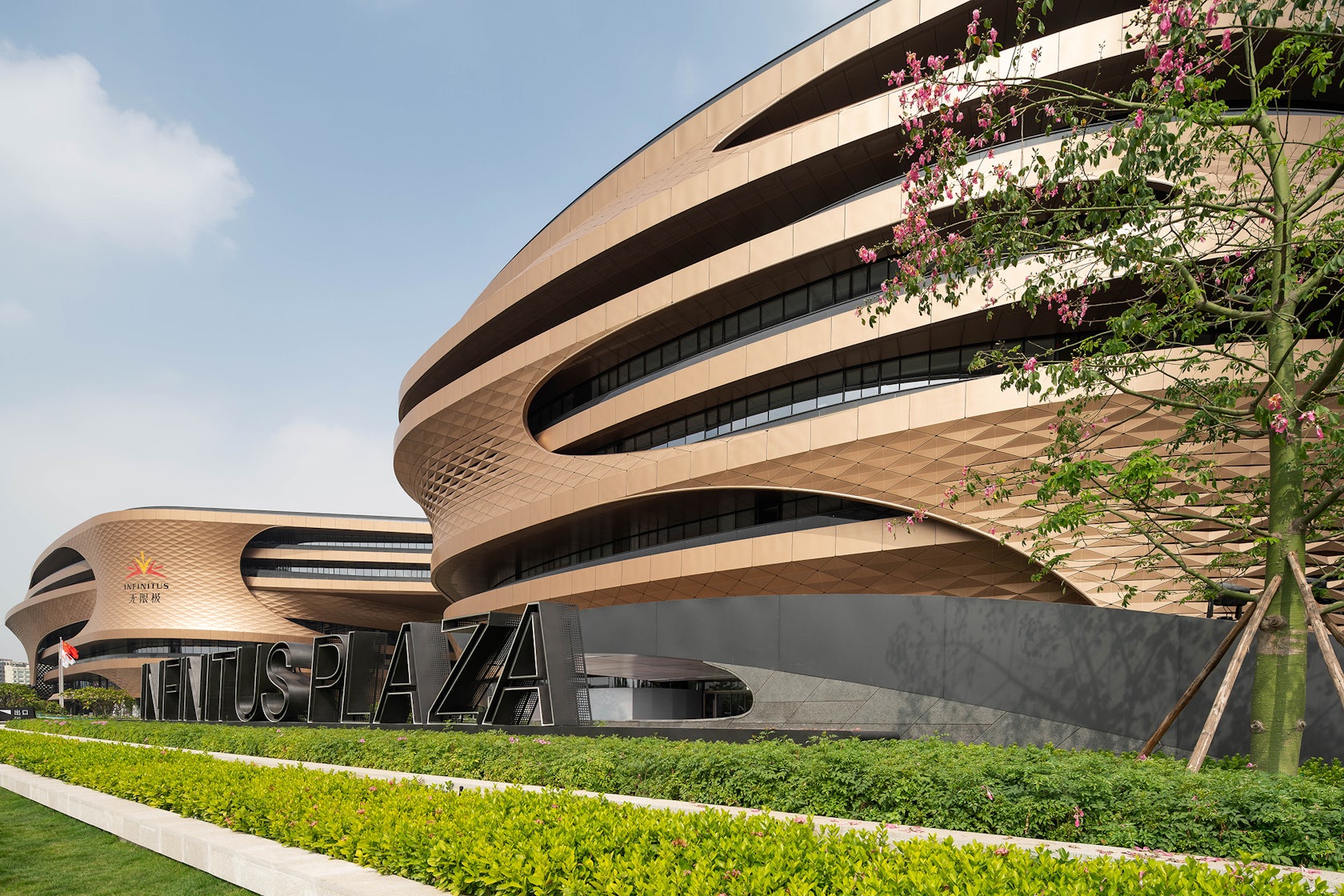
© Zaha Hadid Architects
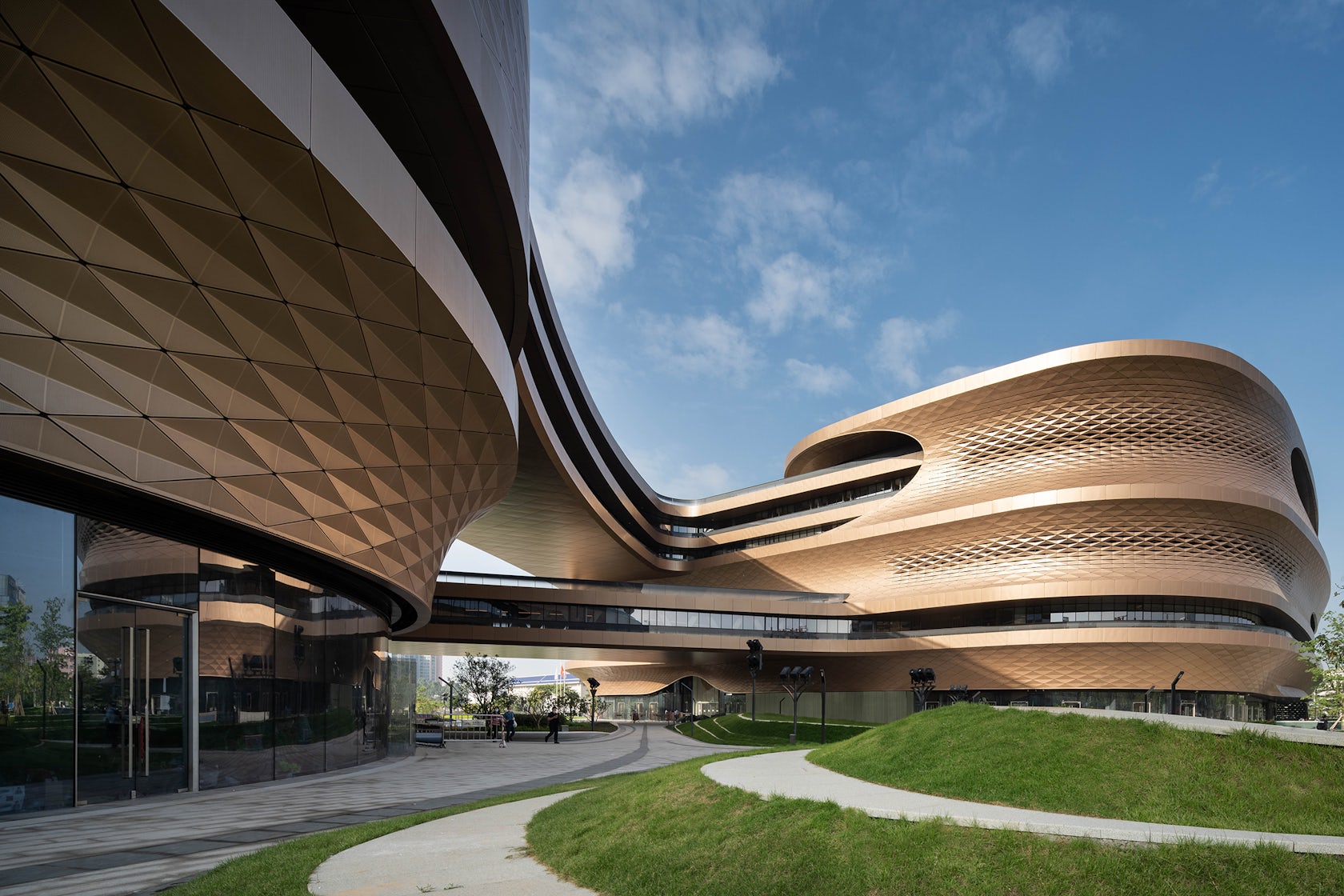
© Zaha Hadid Architects
What was the greatest design challenge you faced during the project, and how did you navigate it?
We worked hard to build integrated client/contractor/design team relationships that could maximise opportunities to prioritize environmental issues and ensure cost-effective sustainability. This collaborative relationship between the client, operator, design team and contractor – together with the development of an overall understanding of the sustainability agenda across the entire project team – was essential to delivering the most sustainable construction and operations of the building throughout its lifetime.

© Zaha Hadid Architects
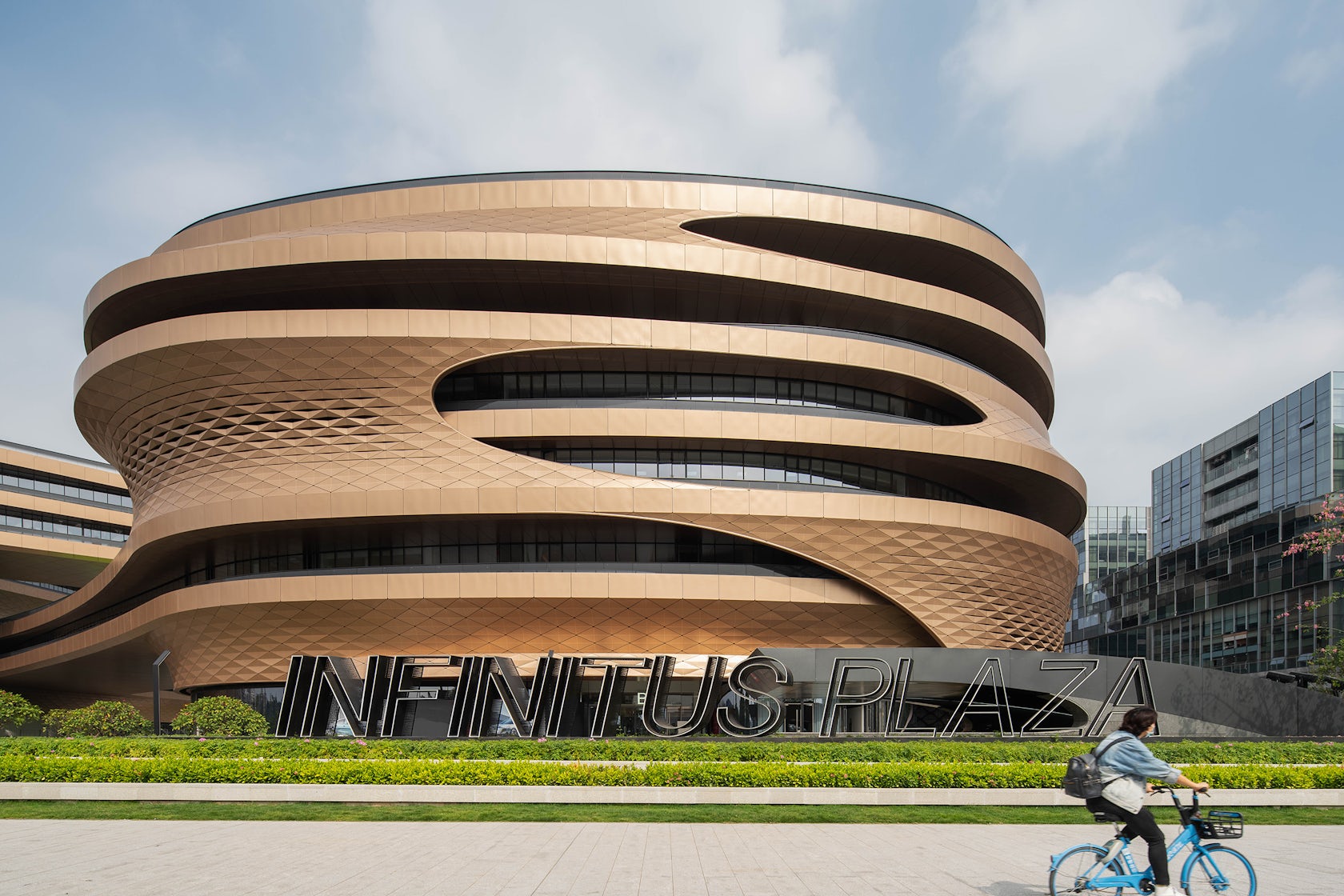
© Zaha Hadid Architects
How did the context of your project — environmental, social or cultural — influence your design?
Infinitus China’s collaborative corporate culture, together with the site straddling a metro line, and Guangzhou’s humid subtropical climate greatly influenced the design. The project’s system of rainwater collection, filtration and reuse also supplies micro-irrigation to the surrounding landscaping. The gardens on the roof of the 3rd, 7th and 8th floors grow herbs and plants native to the region and are naturally irrigated. These outdoor communal areas are linked together with the rooftop jogging track and walking paths. Green roofs comprise 49.36% of the project’s total roof area.
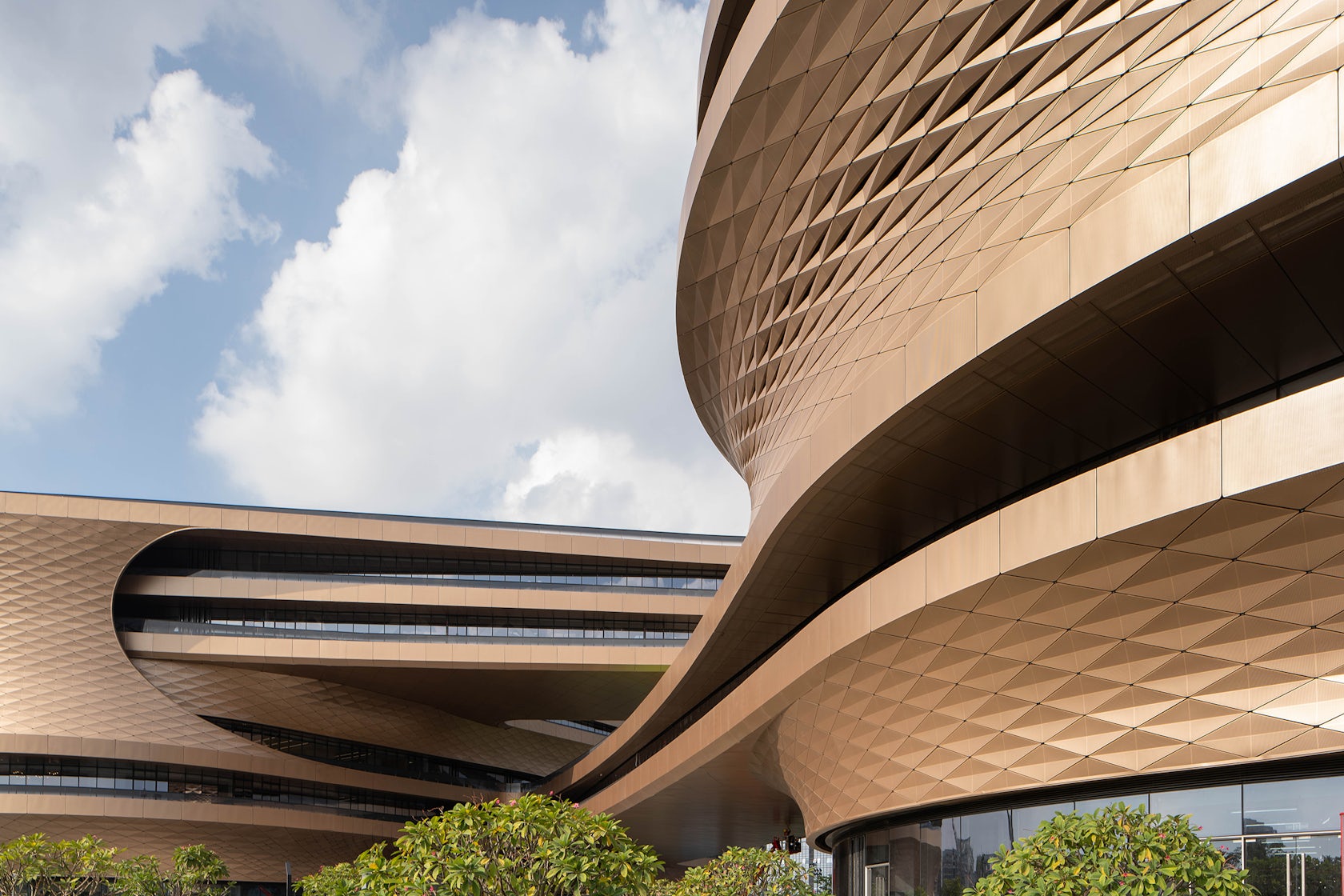
© Zaha Hadid Architects
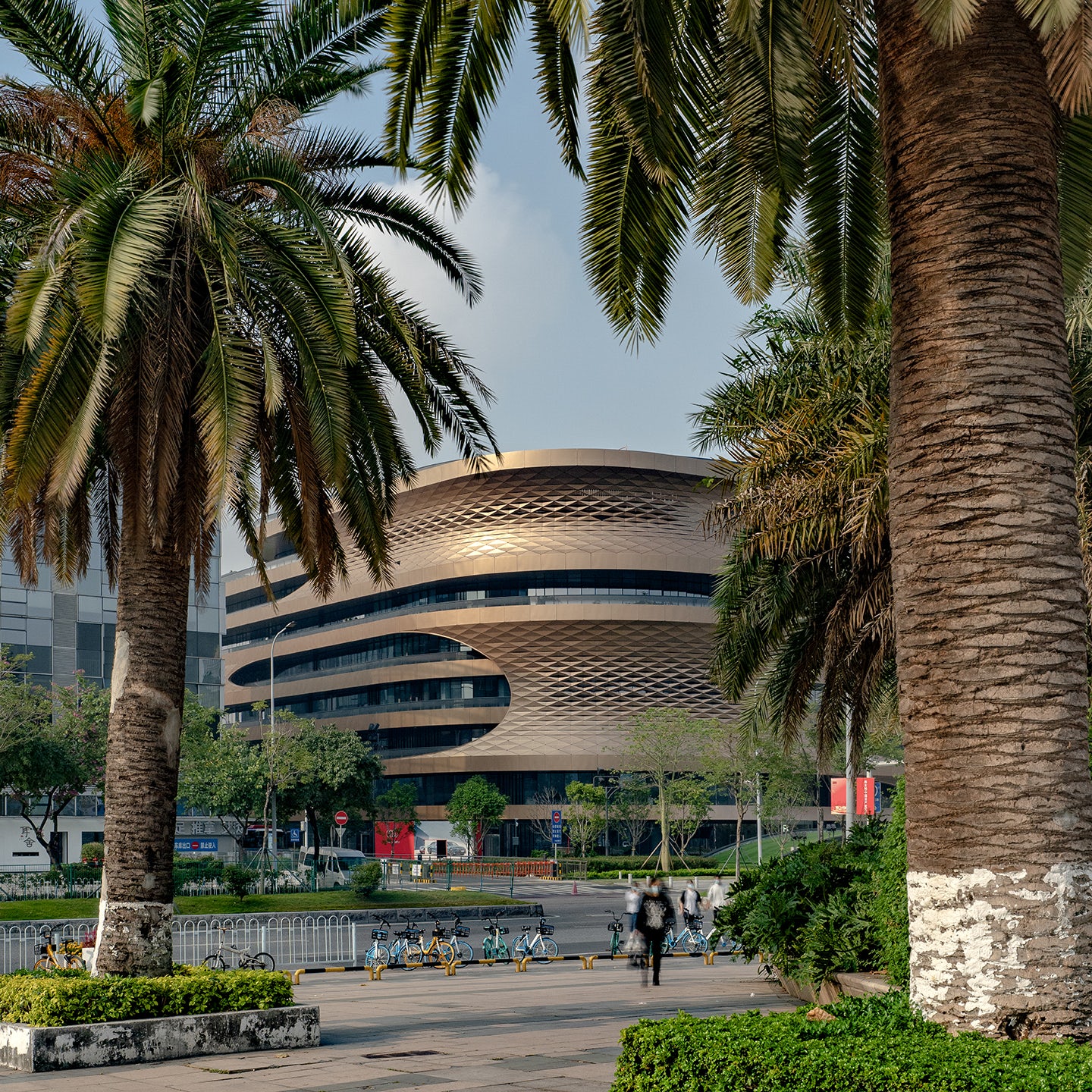
© Zaha Hadid Architects
What drove the selection of materials used in the project?
Optimization of the structure has reduced the amount of concrete required and increased the proportion of recyclable content. 25,088.33 tonnes of recycled materials have been used in the construction of Infinitus Plaza, primarily: steel, copper, glass, aluminium alloy profiles, gypsum products and wood. Annual solar irradiation analysis has determined the width of the outdoor terraces to self-shade the building. This analysis has also defined the external perforated aluminium shading panels to optimise reductions in solar heat gain. These measures, together with double-insulated low-E glazing provide effective shading and heat insulation that ensures good natural light throughout the building while reducing solar heat gain and energy consumption.

© Zaha Hadid Architects
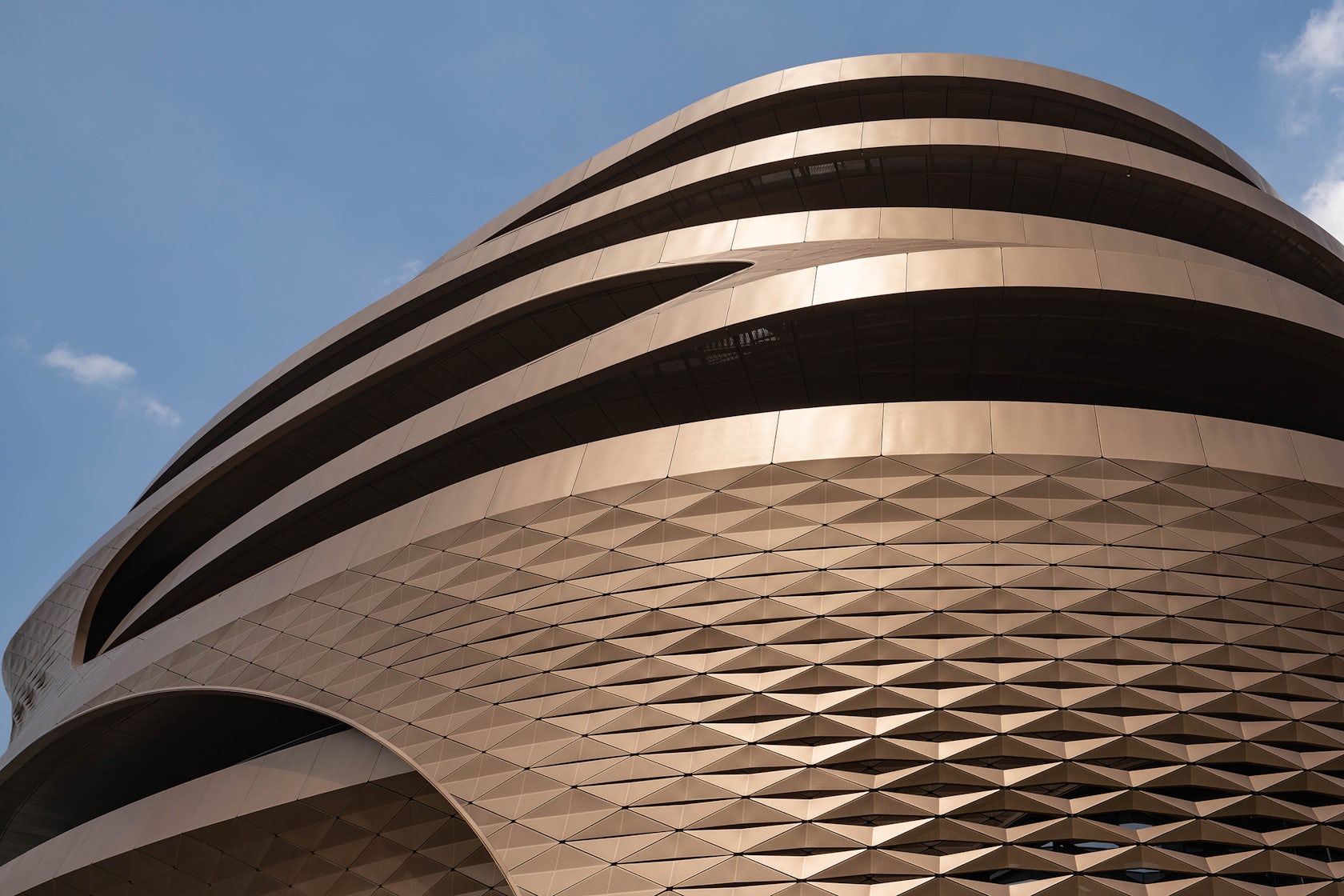
© Zaha Hadid Architects
What is your favorite detail in the project and why?
The cooling strategy within the roof has been very effective. Operated by the building’s smart management system and powered by photovoltaics, a network of sprinklers spray atomised particles of collected rainwater onto the ETFE membrane roof above each atrium to dissipate heat by evaporative cooling. This translucent, double-layered ETFE membrane roof incorporates a 60cm cavity of compressed air. Activated when the membrane’s exterior surface is heated to 35°C by solar radiation, spraying for 3-4 minutes every half an hour will cool its surface temperature by 14°C, effectively lowering interior temperatures by 5°C. The rooftop solar water heating further reduces energy requirements.
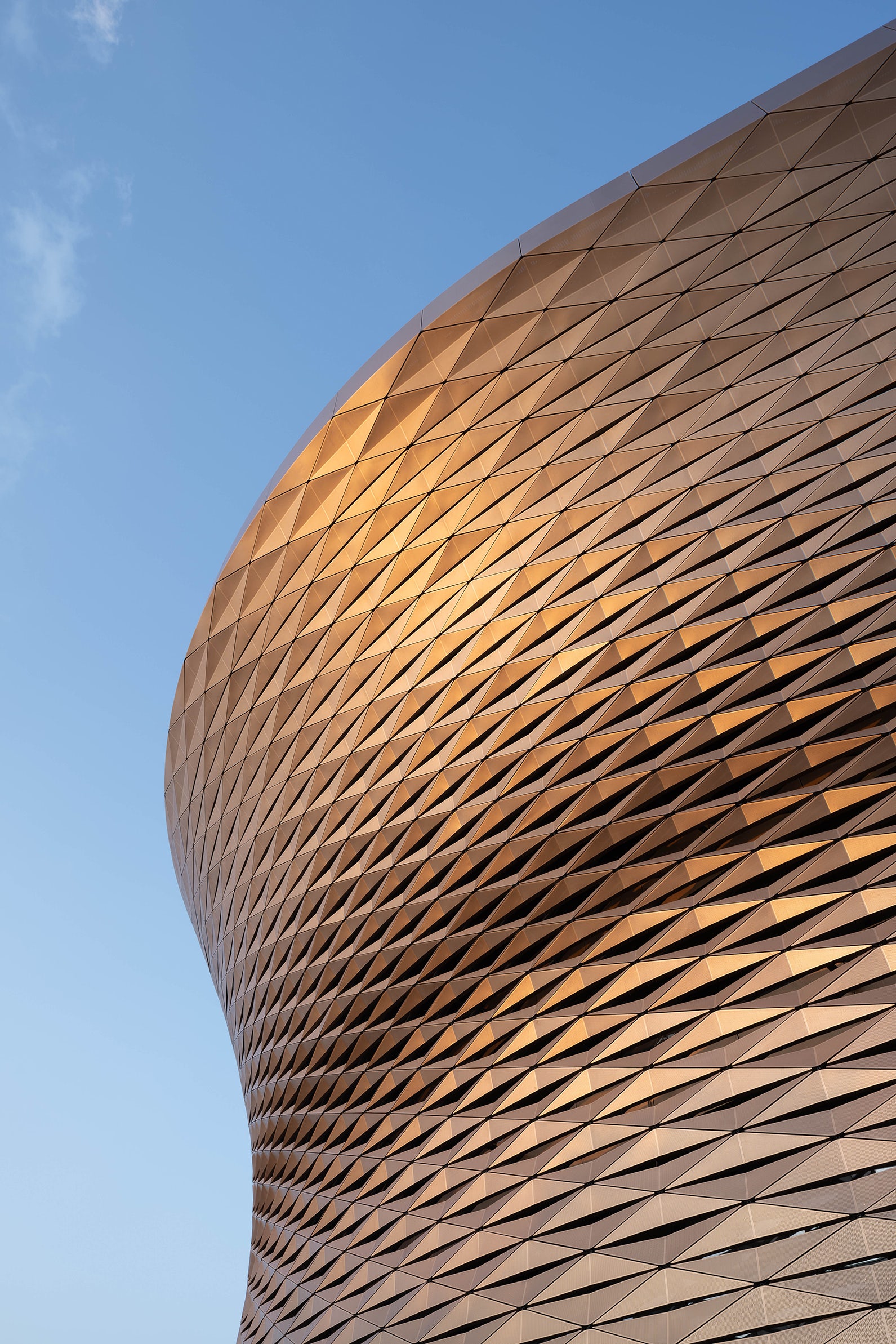
© Zaha Hadid Architects
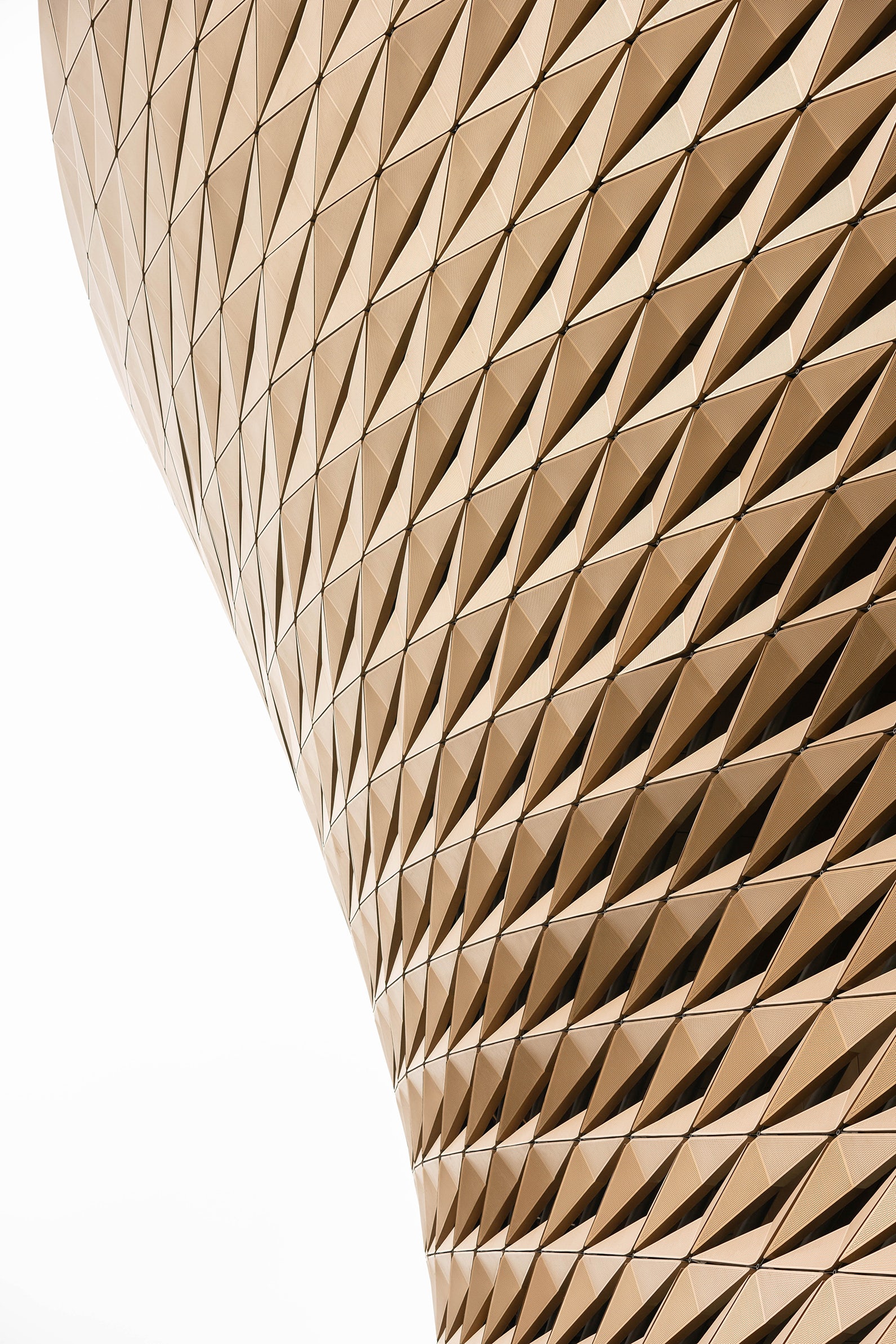
© Zaha Hadid Architects
How important was sustainability as a design criteria as you worked on this project?
Marrying advances in sustainable design and operations with innovations in ecologically sound materials and construction practices was very important to all stakeholders. Situated within Guangzhou’s humid subtropical monsoon climate, Infinitus Plaza has been designed and constructed to LEED Gold certification and the equivalent 3-Stars of China’s Green Building Program with its life cycle carbon emissions calculated at 15.3% embodied carbon and at 84.7% operational carbon emissions.
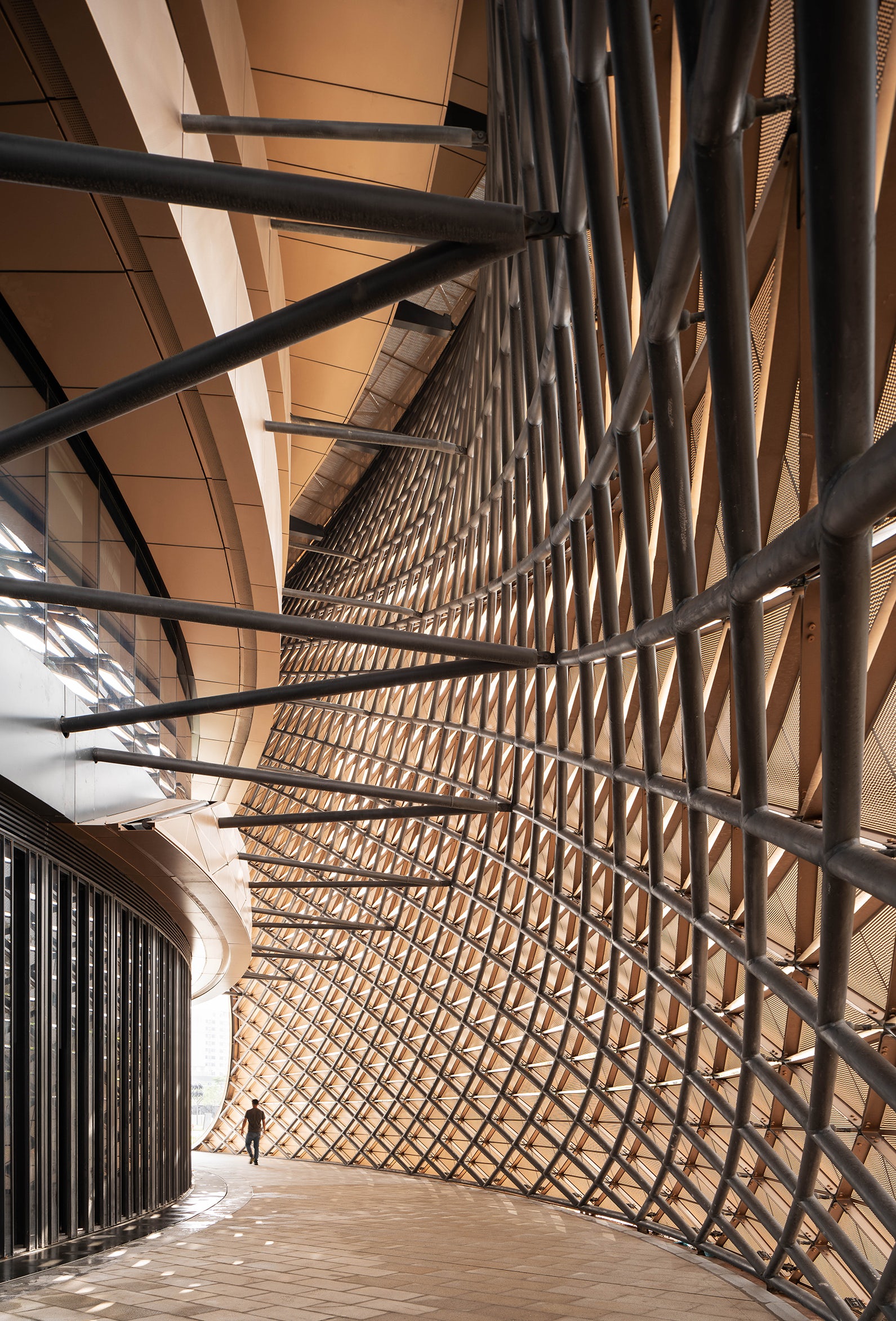
© Zaha Hadid Architects
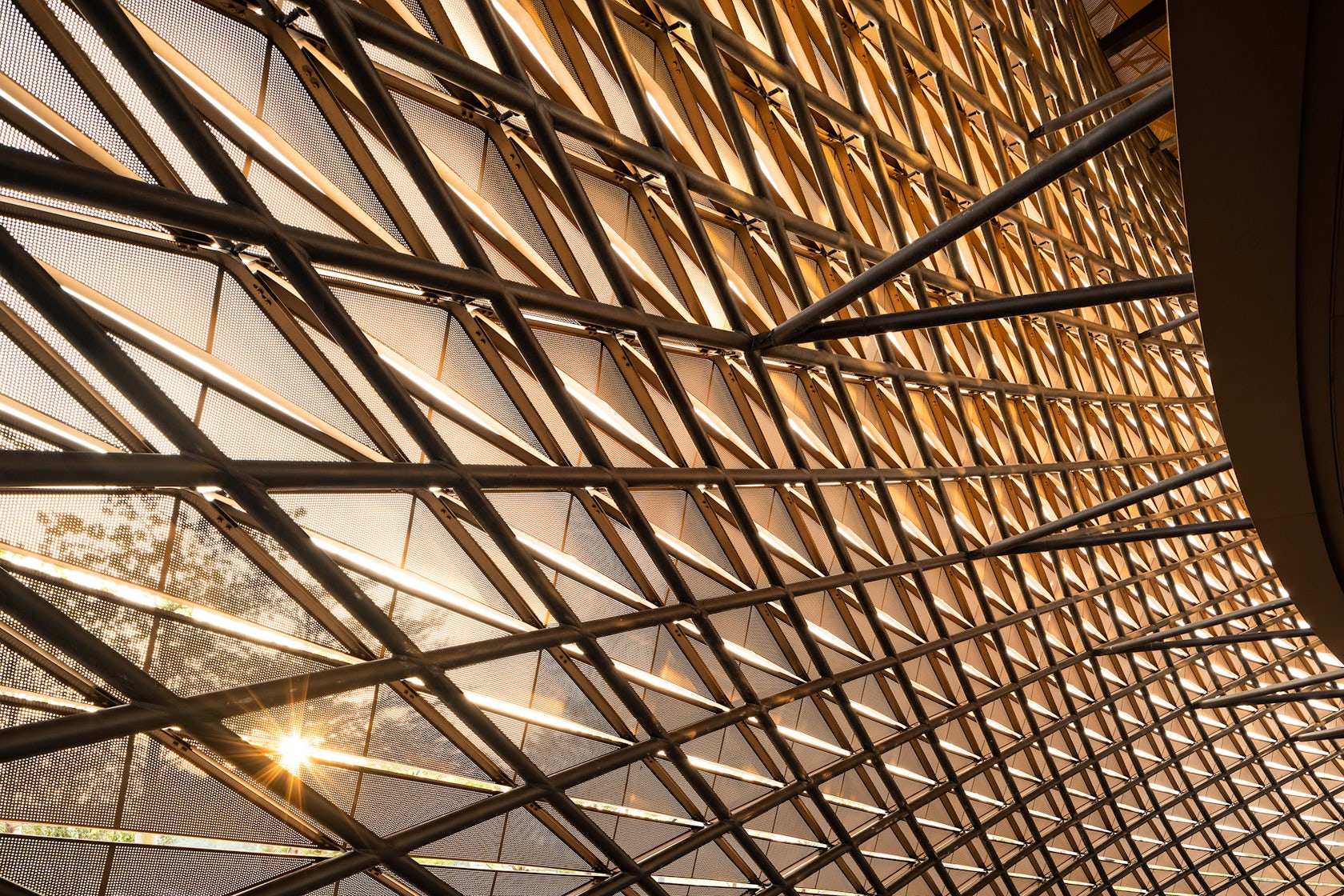
© Zaha Hadid Architects

© Zaha Hadid Architects
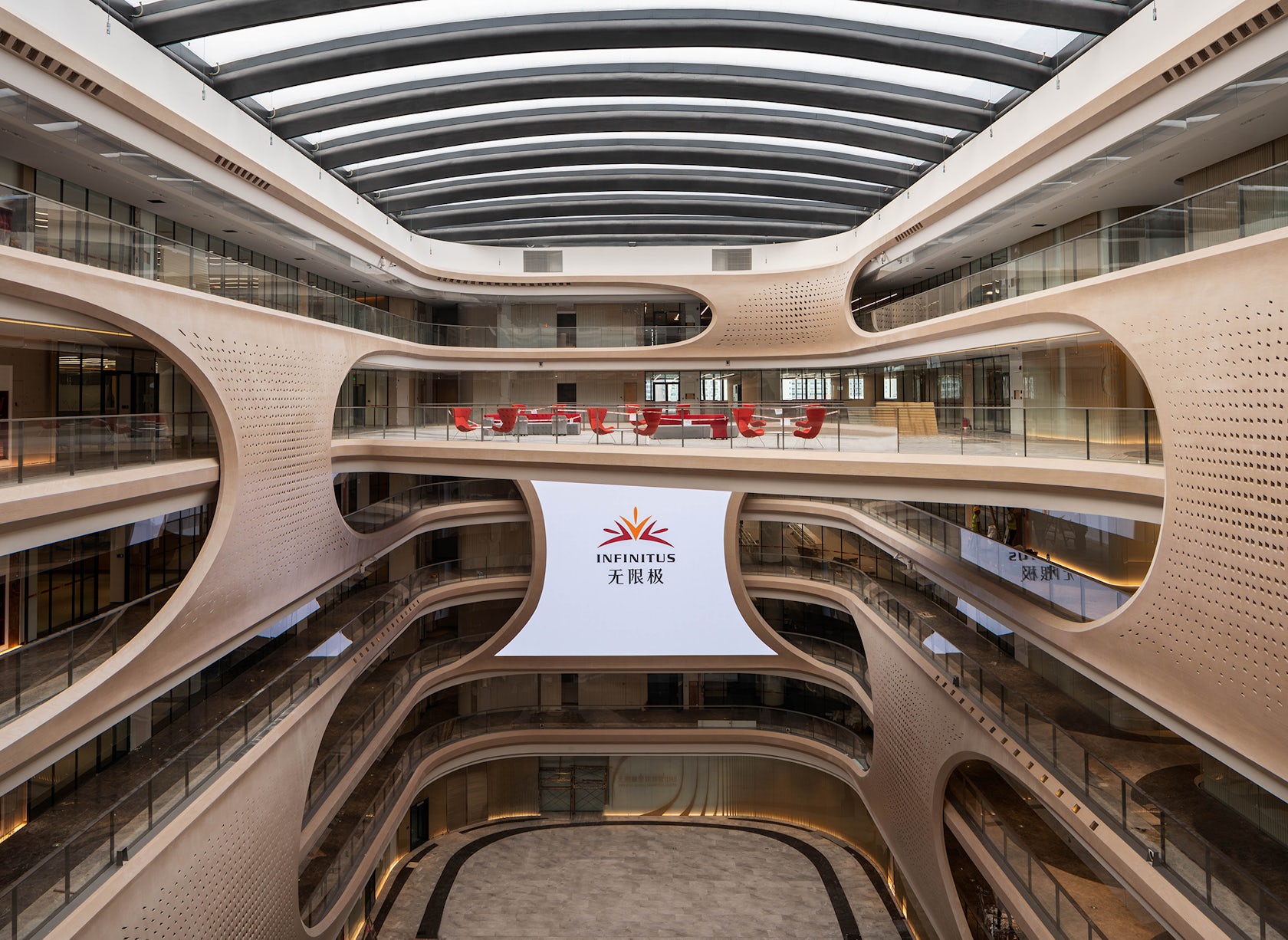
© Zaha Hadid Architects

© Zaha Hadid Architects

© Zaha Hadid Architects
For more on Infinitus Plaza, please visit the in-depth project page on Architizer.
Infinitus Plaza Gallery


